Elves: the Beautiful, the Terrible
I have seen three ages in the West of the world, and many defeats, and many fruitless victories.
Fionn eä Vanwi, Anairel, Celehid, Dior Irukil, Anducil: these are the names of mighty lords and ladies. They are persons who have shaken the foundations of history and have writ their names large across the memories of all peoples and races; they have forged in the smithies of their souls, with all the other mighty members of their race, the conscience of their race: the Elves. We recall the Elvish people in our myths and stories and histories. We feel, in our very bones, the mystical presence of the Elves. And we long to see their unusual beauty, now fading and soon to be gone. Êa síra elin sû e-govaned! They are dying; but it has been foretold.
Nature of the Elves
An Elf is an immortal being who is bound to the world. They are a uniquely beautiful and strange folk, tied to the very earth but becoming weary of it and its troubles. They cannot die of old age, although bodily harm and sorrow may cause an Elf's soul to separate from their body. Even when they die, their spirit is taken and placed in a new body that is identical to the previous body. Their memories are not broken by their cycles of reincarnation; but their memories are not fully restored until adulthood.
The amount of cycles an Elf has gone through doesn't establish how old they may be, but certain, martial, Elves may introduce themselves with the number of cycles they have experienced as a badge of pride — the fewer the cycles, and the greater the age, the more impressive. No Elf today is greater than 3000 years of age, including cycles of death. A further addition: it once took a little less than a 100 years for an Elf to return to the world after death. After the conquests of the Nelqorana, this span of time has increased dramatically to the extent that if an Elf over the age of 1000 dies it is assumed they are gone for good.
While it is technically possible for an Elf to die and be reborn into their own family, this is extremely rare, and when it does occur happens usually two generations down from their original place in the family tree. There is one occasion, in the story of Felegir, of an Elf being reborn to his wife, though there are no instances of this happening elsewhere in Elvish history. A child reborn into their family is treated normally until they regain enough of their memories to prove their old position in the family. Because an Elvish child gains quick mastery over their intellect, they may assume their old position before their body is full grown.
The Western Elves are often defined by their great spirit of melancholy (if they are quite aged) or by their great joviality and activity (if they are relatively young for an Elf). It is perhaps this distinction that creates in the popular consciousness the idea that Elves are both sages and minstrels, that they are both wise-man and faery folk. The aged of the Elves rarely leave their hallowed cities, but the younger kin — quickly becoming a rarity — will venture into the outside world, not yet weary of its troubles, and longing to explore.
Marriage and the Half-Elven
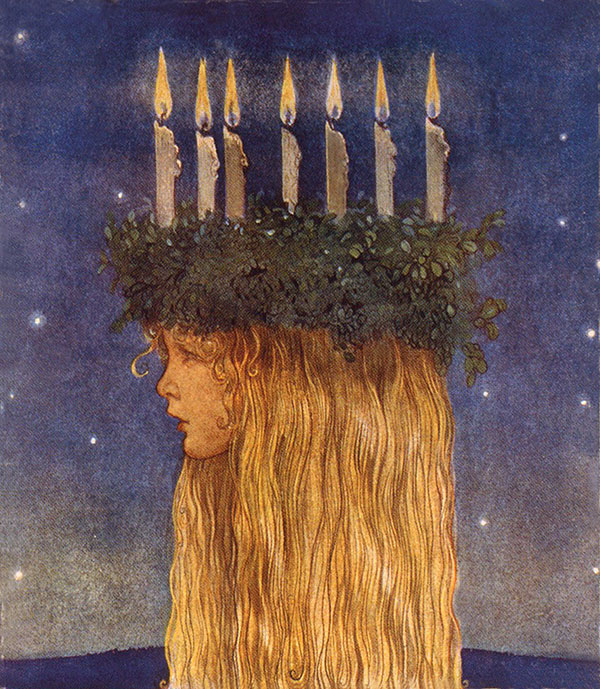
Elves reproduce slowly. They aren't motivated by the sexual powers most Men feel, and, even when Elves do consummate, their fertility is noted to be low. This may be a new development after the Wars of Hate; prior to the Wars, the Elves filled the earth with their numbers.
An Elf marries only once, and marriage occurs at the point of consummation. Marriage is taken very seriously, biologically seriously. An Elf, if forced upon, will die. Now, marriage between a Man and an Elf is a very rare and a very serious affair. Their souls are not meant to head to the same place; sorrow follows most marriages between the races.
Elvish texts, such as the Wensi Ballad, tell of the True Half-Elven: not mere hybrids but those select few who, at the end of the Wars of Hate, were given the choice of either full Elvenhood or Manhood. Those who chose the path of the Elves also grant all their descendants this choice. These descendants are also called the Half-Elven — to be distinguished from our modern Half-elves, who are mere hybrids and ontologically Men. The Half-Elven who chose the path of Men were given greater bodily powers and longer lifespans than the average Man; but all their descendants were cleaved to the path of Men, and have no choice as the descendants of the Elven Half-Elven do.
Few of the marriages between Man and Elf are viewed favourably by the Elves. This is for practical emotional reasons. Everyone knows that falling in love with someone soon to die will lead to heartbreak. There is also the fact that Elves and Men are psychologically different, and understand the world through different rational apparatuses. Furthermore, because Elves do not have the psychological tools derived from death — physical, mental, or social — Elves would be frustratingly slow in changing habits, if they changed at all, which their Mannish mate might feel annoying. Lastly, the Elvish connection to Faery binds them more firmly to the world and grants them greater appetites. This means that Elves may delve into activities for long periods of time without boredom, bear hard trials with less care, and are granted greater physical and mental powers than that of Men.
All these things serve to make romantic relationships between Men and Elves difficult. Little domestic issues can quickly spiral out of control, and communication suffers through a failure of transparency due to differences with their rational apparatuses. Things that the Elf wishes to do are physically limited by the Man. And the slow changes in Elven psychology can bring a Human to the point of despair. They would have lived with, for many decades, the same person they had first married.
So most Elves disparage marriage between the two races, as most fail quickly. And those that succeed end in sorrow, anyways. The spirits of Men go on towards further, unknown spheres; but the Elves are of the Earth, and cannot leave it. So the Elf is left without their mate, forever.
But there are stories from the Elves that celebrate marriages between the races. The Story of Vestin is the most famous. In it, the hero Vestin had to succeed a bride-task set by the capricious father of an Elf-maid, called Penthesilia. He was betrayed after the task, and was killed. In her grief, Penthesilia followed him to the Halls of the Dead. There she implored Morrôs Seat of Death to release both Vestin and her, and she sang for the god. The song of Penthesilia before Morrôs was the fairest that has ever been wrought, and the most sorrowful that the world shall ever hear; and Morrôs was moved to pity, who never before was so moved, nor has been since. The two were restored to life, but Penthesilia had to renounce her inheritance of immortality, and she joined the ranks of Humanity.
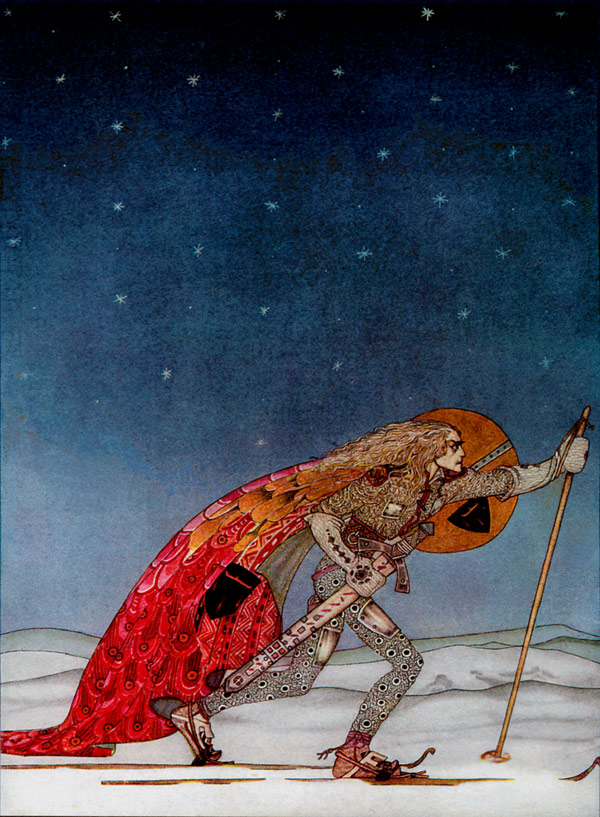
Together they decried the evil lord and left his realm. They went to the shores of Isdoni and founded the House of Bel. They birthed Calmacil the Half-Elven, who would go on with his House to the Altaic Country and there bitterly fight Abayin and his Yeqitari. And through mingling with the local tribe of Men there called the Corodwalt, he would establish for himself a mighty people called the Nelqorana, who would go on to change the history of our world.
Beard Growth and Beauty
Elves cannot grow beards in general. Elves that are very old can grow beards, but this age is well beyond any living Elf today. Elves who have gone through traumatic experiences are also capable of beard growth.
Elves are usually beautiful. An Elf can only become grossly fat by extreme effort or abuse, and the same is said of an Elf being unnaturally thin.
Childhood of the Elves
Elvish children grow more slowly bodily than Men, but more swiftly mentally. An Elvish child will learn to read at the age of one, and they will be able to walk and dance at the same age. Their will comes to quick mastery over their bodies. During Elvish childhood, the memories of their past lives have not yet returned. This makes an Elvish childhood merry and joyful.
By about the third year, Human and Dwarf children begin outstripping Elf. They hasten to their full stature while the Elves linger in the spring of childhood. Children of Men might reach their full stature while Elvish children still have the appearance of seven year olds — although Elvish children will have comparable or greater minds. Not until their fiftieth year do Elves attain the stature and figure that they will forever keep for the rest of their lives, and some do not reach this point until about the hundredth year.
Property Rights
Elvish property rights are remarkably consistent across the West, and can be divided between Resources Held in Common and Private Property.
The exploitable resources of a region are considered as communal property, or Resources Held in Common. Anyone in the local community can use them. The remarkable ability of the Elves to multiply the bounty of a resource, so long as they have some initial resource they can multiply, allowed them to share in common natural resources without much fear of depletion. So long as the whole community isn't exploiting a single resource, Elves can be assured that they would have it available for many years. Land was a unique resource in that it was often considered under the Private domain.
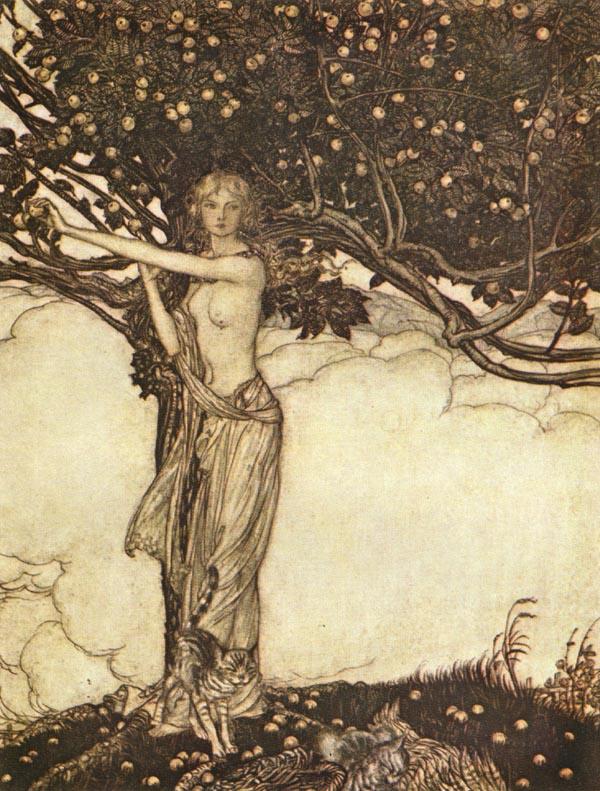
Those items made by labor and invested with the power of their creator are considered as the Private Property of their creator. Elvish Private Property can also be called Property of Personality. For when Elves produce objects with labor, they truly invest themselves into that item. It joins their personality, and any damage that comes to it, or any misuse of it, may harm the creator physically—even unto death. This is why all Elvish artifacts—from architecture to baubles—have around them a sense of 'naturalness', that they somehow sprung out of the land just the way they are. For the Elves themselves are as the land, though they are equally personalities.
Worked land is considered the private property of they who worked it. So Elves of an organizing mindset are very careful to distribute who works what. Payment is doled out according to labor given; so one who plows the field, one who sows, and one who reaps gain a portion of the produce they made together. And while it is almost impossible for Men to determine exactly what that should entail, the Elves have an intuitive sense for what should be paid.
As for the matter of inheritance, the fact of reincarnation causes some difficulty. Because Private Property is the only property that can be inherited, and Private Property is bound to the personality, there are often times when the original maker returns to his old home and demands what was originally his. The rule of thumb for settling these disputes is to count the number of years that the item was owned by the original person, and compare that with the number of years, plus one, that item was owned by they who inherited it (by law, or consent, etc.). Whichever number of years is greater determines who keeps the item.
The Locus of Control in Elves
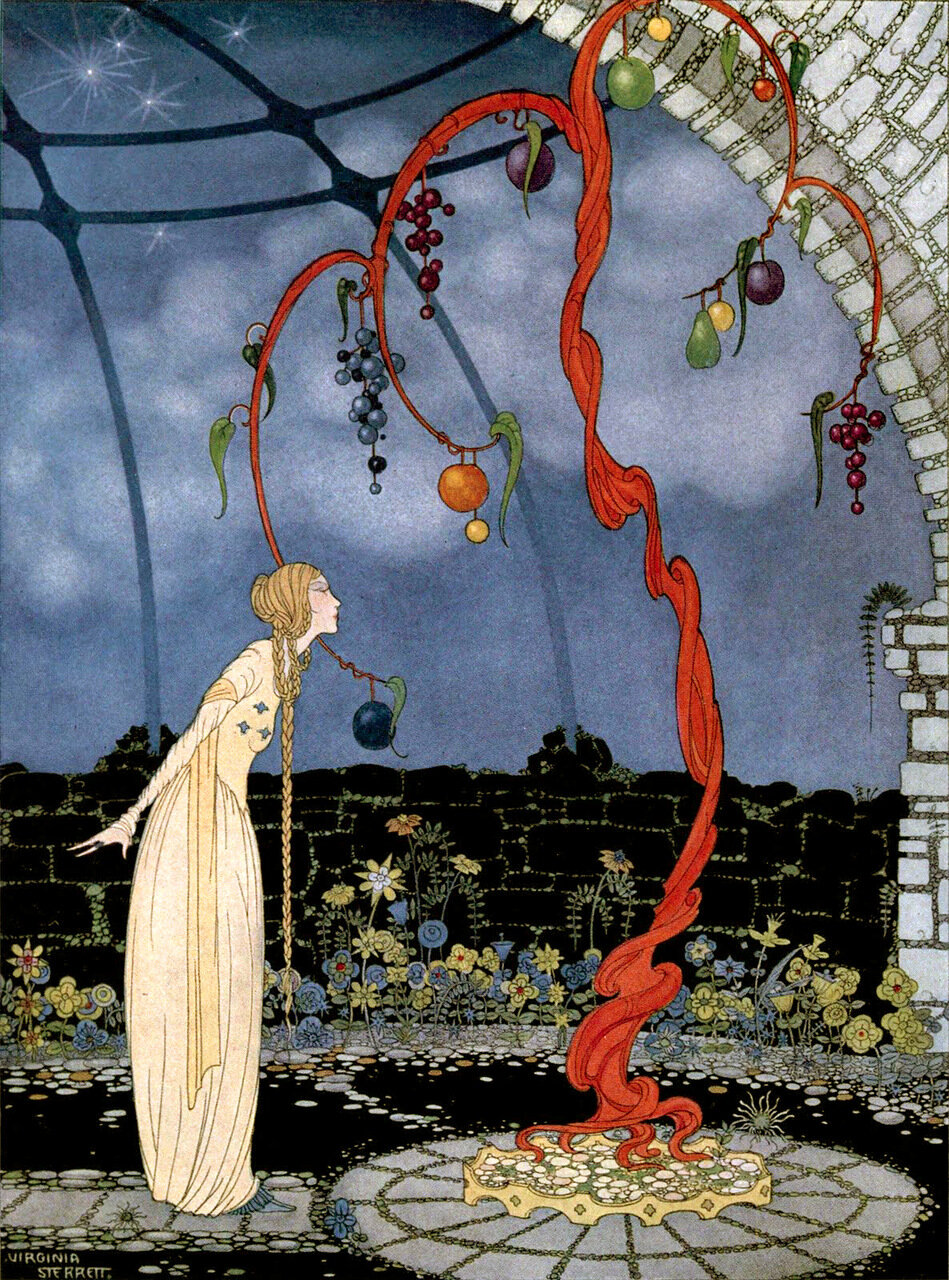
There are two realms that make up our world. Without both realms you do not have the world, but a shadow of it: a privation. These realms are called the Seen and the Unseen. Much of Elven nature can be sourced from the Elves' relation to these two realms.
An Elf is an immortal being bound to the world. They cannot die of old age, although bodily harm and sorrow may cause an Elf's soul to separate from their body. They are stronger than Men, more intelligent, granted an immortal life, and in general superior in every physical matter. This is because an Elf is incarnate in both the Seen and the Unseen realms. Being more strongly of the world, they can act effects on the world with greater strength. Simply, if one's whole being is devoted to an activity, then one will be more impactful on that activity.
Men, for point of comparison, are like aliens to this world. Men are only incarnate in the Seen realm. So Men are not entirely of the world, and cannot impress on the world's matter as greatly as the Elves. Elves, though, are of this world perfectly and mimic it — hence their physical resilience.
This nature of being in both realms is less complicated than the nature of being bound only to one realm, as with Humans. The deviance of Humanity throw the Elvish and Dwarrow natures into contrast. Most important to consider are the methods of judgment and reasoning of the Elves. They are wholly different and incomprehensible to Men. Being of two realms, their Forms (or Souls/Minds), and therefore their Matter (or Body), are of a different kind than Humans. Their reasoning is a purely noumenon affair: their Reasoning is equivalent to Reality, as if the world were experiencing itself; as if the passive observed were to be the active observer; there is no synthetic process of the mind and the outside world beyond the mind. It is an absolute and objective Reasoning. But Elves can still be incorrect about matters — though it is impossible to say how; most likely it comes from a flaw in the nature of the Elves.
In a conversation between an Elf and Human, this manifests itself only when the topic turns towards more high minded and intellectual topics. A Human finds that they cannot understand what the other person is saying. But when they split ways, they find that they understood everything perfectly, not in their terms, words, or even reason, but rather at the heart; it was understood not intellectually or even intuitively, and any actions derived from the speech are dreamlike and hardly understood by even their actors. It was as if a cloud had descended over their eyes and mind and had led and advised them towards actions mysterious and shadowed. This strange experience is explained that, as one asks more difficult questions, one begins to approach infinitely closer to the point of requiring the mind to have infinite and intuitive knowledge — that is, one grows closer to requiring pure spirit. And Elvish spirits are different from Humans. They cannot communicate face to face.
One might question the nature of this dual residency. If the Elf has matter in both realms, does this not imply two bodies? And therefore two Forms or Souls? And then there would be two minds. But this question stems from a misunderstanding of the relationship between the Unseen and Seen realm. These two realms are not dualist, separated from each other in a time or place. There is no vocabulary that a Human has that may describe the relationship perfectly. But it can be closely approximated. The realm of the Unseen is like the Form of the Seen. Just as the Soul is the Form of the Body. They are more like a single unit than separate. But calling the Unseen realm a Form is incorrect. For an Elvish body still occupies the Unseen realm, rather than an Elvish spirit. Nevertheless, the relationship is similar. It may be called the Informal-Form of the Seen realm.
So an Elvish body is of both realms. But these two realms are as one. And an Elvish mind is a uniform thing. But it is the Form of the Informal-Form of the Body, and it is the Form of the Body of the Elf. And the interplay between the realms allows the Elves to create their wonders and constructions.
This being of both the Unseen and Seen realms is a being both grounded and eternal. Being grounded, Elves may climb, dance, sing, yell bawdy jokes, and kill. Being eternal, Elves may rejoin us in cycles of reincarnation, they do not age, and their fashions are of a larger appetite than that of a Human's.
To explain more on Elven fashion: an Elf's standards of beauty are similar to that of a Human's. But Men tend to go through 'fads' of beauty and of appreciation of the body, though no fad is exceedingly different from the other. Elves tend to all be beautiful, but widely representative of all Human 'fads' at once. The face may be round and soft or hard and imperious, but both behold the Elvish beauty. The eyes may be blue or they may be brown, but both are bright with Elvish joy.
The Coming of the Elves
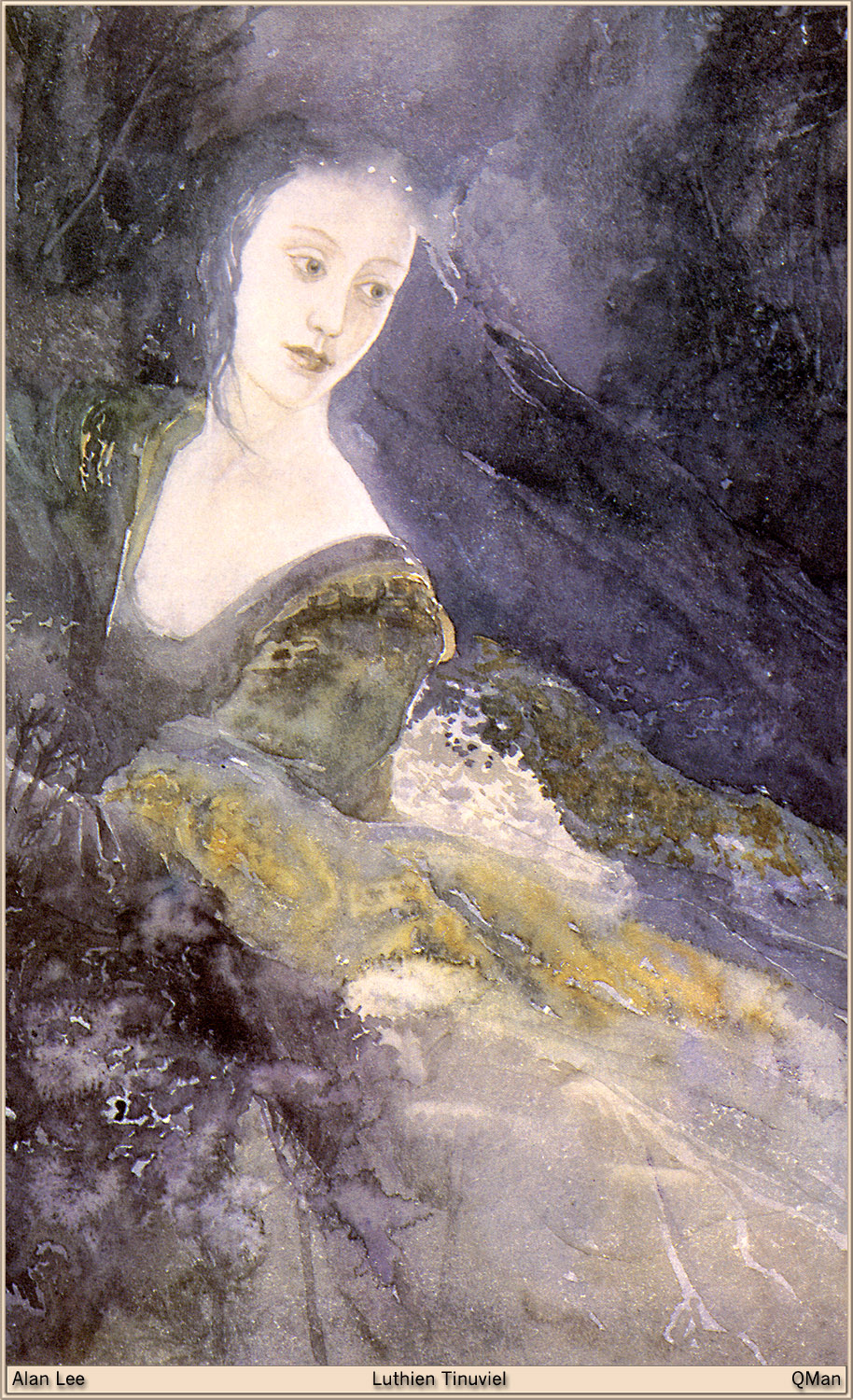
The cliffs of Adarnäule and its breaking clods of earth mixed with the foam of the sea crashing upon the shore of Ren ê Taule, and into this mixture Vahan exhaled his Spirit of Life, and the mixture became the Elves: the First-born. The Elves awoke and saw above them the wheeling constellations — and in those days the stars were still young and brightly lit. The Elves made for themselves a language, and they called themselves a name that is now lost, but meant the 'Beloved Amidst the Innumerable Stars'.
It was soon after their creation that the Elves separated. They spread across the earth and were fruitful and multiplied. The gods soon learned of these strange new creations, which they had foreseen a little of in Heaven, and they longed to be with them. So Hundimar told Velziel and Hod to gather their greatest runners and to find and bring all the Elvenfolk to Boryen where the gods lay in rest.
Netzach, Solitude and Power of Endurance, lead the assembly of runners. They went over the face of the earth, and over all its terrains, and gathered the Elves that would come. And most Elves, when they saw the gods in their glory and majesty, felt love in their hearts and would quickly accept. But Gendûet had already begun his dark designs, and while the gods still counseled on what to do with the Elvenfolk he had set his evil purposes upon the world. Many of the Elves were dogged by his shadowy presence or were followed by his evil spirits, and, when the runners of the gods appeared to them, they rejected the gods in fear — for they had sensed their brother's dark presence, and assumed all the gods to be the same. These are the Ava'lman: the Lost Elves. And they have never seen the green lawns of Boryen.
The gods were unsure why some Elves rejected their offer and gift. The gods were still young and as yet untouched by evil. They did not know of dark designs, and their minds were not yet wearied by evil. So they thought it to be an unmarred and free choice of the Elves. They did not inquire much further.
The Sundering of the Elves
It soon came to pass that Gendûet's lies would sunder the Elves from the gods, and the Seats separated from their creation so that they would not harm them. It was at this time that the first breakage began between the Elves. As the Elves chased and harassed the fleeing gods, a stone from a sling broke a tiny crack on the mask of Chesed Seat of Love. A brilliant light burst out, and it blinded a tenth of the assembled Elves. These tenth are called the Itie'lman, the Blind Elves, and they somewhat sorrowed, though not fully repented, for their impious act. The rest were called the Yeqitari, the Eastern Elves, and they traveled to farther lands to establish mighty kingdoms.
There were also the Morgondi, the Forgotten Elves, sometimes called by Men the Wood Elves. They are counted among the Impious Traitors, because though they weren't present at the Sundering of the Elves they disliked the gods, and were glad to be rid of them.
The Eastern Age of Glass and Steel
As the majority of the Elvenfolk headed to the East they were met by Gendûet Seat of Judgement. He offered them assistance in establishing their kingdoms. Because the Yeqitari had long listened to the god's advice, they accepted his offer. In no short time, empires of steam and wheels were constructed under the guidance of Gendûet and the Devil Prince Qumran. It was a prosperous time. The Eastern Elves lived in cities of glass and steel. But all the while, they prepared primarily for war. Gendûet had sown his words deeply and all the Yeqitari relied on his advice. He commanded from a mighty iron fortress in the far, far east. He sought dominion over all and longed for war.
The Summer Age of the Western Elves
A weeping, wasting afternoon
Weighs down the aspiring corn;
Amber and red, the sunset soon
Leads back to golden morn.
For a little while in the West there was a flurry of activity and an expansion of wealth and prosperity. But this age was short, and only a little while even in the minds of Men. To the Elves this Summer came and passed as the wind; and soon howling from the East came the noises of shrill trumpets and fierce warcries. The Long, Dark Winter had arrived.
In their Summer Age the Western Elves spread across the western continents of Erub and Aran. They established mighty empires and created kingdoms that were filled with the sounds of music and activity. The Tentyric Kings of Alk'kir constructed their upturned pyramids, the House of Melthran founded cities with towers like spikes of pearl, the Caládolhn made Homely Houses in the frigid northern mountains, and discovered the ever-lasting principles of warm fires in cold weathers.
Men arrived from the East, haunted by dark and shadowy figures, which have thereafter loomed in their minds as terrible myths and ancient ghost stories. The Western Elves were somewhat welcoming, and the first kingdoms of Men were established.
Elvish learning was always desired. And structures from those times still remain today, though mostly in states of disrepair, and slowly falling into obscurity.
The Dwarrow learned much from the Elves. Lucrative trade agreements were made between the peoples. As the underbellies of the mountains echoed with the sounds of Dwarrow smithies, the Elves adorned the land with works of architecture that did not take, but added, to the natural beauty. The most beautiful things were created, then. Gems with internal lights, glowing softly. Fine clothes of gold and silver. Towers of adamant and towers of mithril, crowned by golden lights and fires so that their cities were never dark, and yet the stars innumerable still twinkled bold and bright in their arrays and constellations. If only those days could last forever!
But war from the east was coming, and even in their Summer Age the Western Elves fought amongst themselves. And all the Western Elves blamed their losses on each other. They could not imagine that they were fallible. Mighty armaments were built. Walls were stacked high, and great towers loomed over the parapets, stark and leering. And the very earth groaned as it was delved more deeply for precious metals.
And at last, war came.
The Wars of Hate
Little will be said on the Wars of Hate, here. The victories of the West were fruitless. Their defeats were long and long-suffering. The Caládolhn were extinguished. The line of Muyyaqar was murdered. The West was to be consumed by the Seat of Judgement. And all was to be lost.
So let us give thanks to Detheril the Mariner, Vahan bless him. May we sing the praises of Fionn eä Vanwi, who led the Heavenly Host and suffered mightily against Gendûet. May we play our instruments in love of the many fallen. May we adore Ioshua, who is Vahan, and may we always remember his terrible death against the World-serpent, may we remember his descent into Hell, may we remember the Doom He has averted! And through Him we are saved. May Evil at last be destroyed at the End of Days. Vahan! Let it be so!
Êa síra elin sû e-govaned!
The Elvish Decline
I should be sorry to see them go, hi ho, I should be sorry to see them go...
The Wars of Hate ruined all the lands and all the kingdoms of the world. The gods had shattered Boryen, and the ferocity of their battling had thrown all peoples asunder. It was in the aftermath of this destruction that the gods offered peace and due justice to the Elves from both the West and the East. Most Elves accepted. By far more of the Western Elves accepted. They went with the gods to be judged in Morrôs's Halls. So the Age of the Elves ended, and the Age of Man began.
As for those Elves that still remained. We are not sure what this decision did to the Yeqitari Elves, but we know that, in the West, the Elves diminished ever further in both bodily and political powers. The Elves do not as often return when they die. They are not reincarnated: they remain in Morrôs's Halls, weary of the pains of the world. But they will return after the End of the World, reborn and rejuvenated.
On the Yeqitari
In days past there were many more groups and clans within the numbers of the Eastern Elves, but with the ending of the Wars of Hate they were diminished. Nevertheless, the four mightiest peoples of the Yeqitari Elves remain to this day. They are the Parasquen, a race of dark or ashy skinned Elves; the Yan, wealthiest and most numerous of all the Elven race, including the Itie'lman; the Naharaim, a race of folk most interested in steam and metal, they have sometimes been called Dwarrow though this is a misnomer, the Devil Prince Qumran enjoyed their company very much; the Genunogora, a people of coagulation and disintegration, full of wisdom and knowledge; and the Altaic, who were sundered from a greater people called the Altresdolhn, and never had great love for the Seat of Judgement, although they followed all he decreed.
Though their powers are far diminished than in the Elder Days, they still retain their kingdoms and have large populations. These Elves do not seem to have as great a magical ability as their Western counterparts. There have even been reports of the Eastern Elves dying of old age, although these are likely exaggerated.
On the Itie'lman
The Itie'lman are called the High Elves, and they were once the most numerous of peoples in the West. There are four major divisions. There are the Eresdolhn, they are golden and black haired folk who loved the arts of crafting and building, they were mightiest of the Itie'lman but few remain today; the Pol-Muyyaqar, they are descendants of the powerful Tentyric Kings of the Alk'kir desert, but now they are a mostly nomadic people, wandering over the dunes like pale spirits of the wind; the Pirisqwik, once rulers of a sprawling jungle and mountain empire to the far south, they have been cursed and reduced to insanity and savagery, worshiping the Once-living-now-dead gods to whom they beseeched for help against the Yeqitari, there are still some who retain their identities, although they are now called the Dark Elves and cannot bear the light of the Day; and the Caládolhn, a tragic people who survived in only a few echelons after the Yeqitari annihilated their northern kingdoms — they were later attacked by the Nelqorana in the Northern Invasion, but they have survived these tribulations.
Notably, the High Elves do not differ from Men in appearance — though usually they have bodies of Men in their physical prime. Itie'lman ears — among other Elves tapered at the end like a faery's — look very much like a Human's. But one can tell an Itie'lman from a Human by many imperceptible, veering on subconscious acting, traits. Poise, the way an Itie'lman talks and the eyes weighed heavily, etc.: you cannot mistake a High Elf for a Man — their natures are too different and burn with the striking clarity of fire.
The Itie'lman today are only finishing the long defeat that was begun many thousands of years ago, but they die out slowly. Eventually, all the Western Elves will settle in the Halls of the Dead, like flies.
On the Morgondi
The Morgondi are the Forgotten Elves, so named because they have done little in comparison to the Itie'lman against the forces of Gevurah. There are three major divisions of this somewhat numerous people. All of them prefer the boughs of trees to the high walls of cities, although they still have crafts of their own sort. And the Lorwen are known to make castles. The divisions go as such: there are the Quoth, by far the most numerous of the Morgondi, they adore 'play' and love soaring and high trees across which they can leap like startled birds into the air; the Lorwen, they are the least wise but the most dangerous and cunning of the Elves, but they have been beaten back and slaughtered by the Vampires of Vulga, and are near extinction; the Eçé, they are an extinct race, and the last of them is the vampiress Alshod Sildressi, they had a fierce strength that burns like a wildfire, and they were once the greatest melee combatants in the world — the Eçé participated somewhat often in the Wars of Hate.
The Morgondi, too, diminish.
On the Ava'lman
The Lost Elves are little recorded of in history, and we can assume tragic ends to their people, either stolen away by Gevurah and experimented on by Marqôd, or perhaps simply disappearing as many races do. One recorded race of the Ava'lman are the Ishvamoïnen, the Snow Elves. But they are an isolationist people, and have been clearly struck by a terrible sorrow shared by all members of their race.
So they diminish, as well.
On the Vanwi
- Shii
- Néla
The Vanwi are a legendary group of Elves who didn't betray the gods on that fateful day. They are led by Fionn eä Vanwi, the designated High King of all the Elves in the world. He is annointed by Hundimar Seat of the Sky himself. The Vanwi presumably include many tribes and groups of Elves who left their greater groups in favour of support of the gods. While not much is known about the Vanwi, we are able to guess due to fragments of historical records and some personal experiences encountered on the Island of Tete, which seems to have a closer connection to whatever realms the Vanwi dwell in.
We know of two tribes of Elves of the Vanwi. They are called the Shii — or the Twilight Elves — and the Néla, which is Fionn's own clan and people. The Shii dwell in a strange half-realm, invisible to ours, and it is shadowed in an eternal and misted twilight. The moon hangs half full, and the stars twinkle brighter than ours. This realm we call the Realm of Crossed Clay. Of the Néla we aren't sure. Sages are only aware of their name, and that they are the most lordly of the Elvish clans, having always stayed pious and righteous. As to what they look like, their temperaments, and their occupied realm, we do not know.
Take care not to step on those shrooms, tread around them! The Shii were out last night, and under the moon they danced their hearts out.

Make sure you step quietly while treading through Elven woods. If you don't, well, you'll get caught. And then the Elves who caught you will make that stupid joke about how they could've 'shot you in the dark cause your breathing was so loud'. You'd think with all that time on their hands they'd make more original stuff.
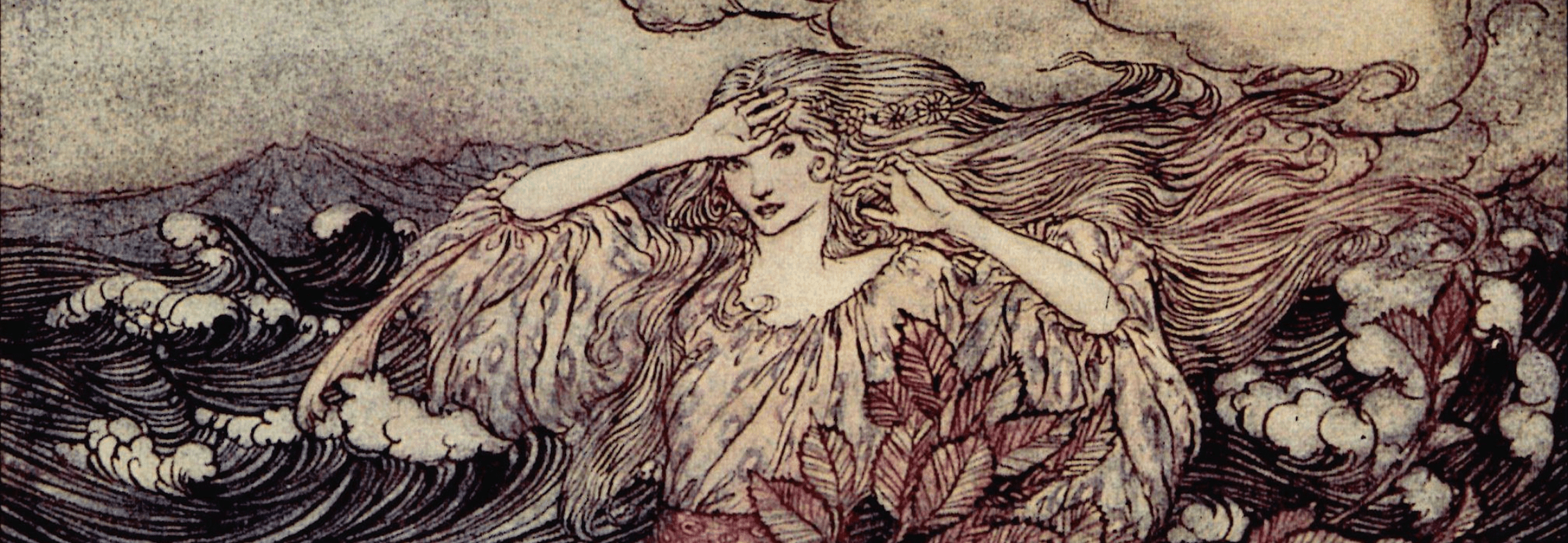
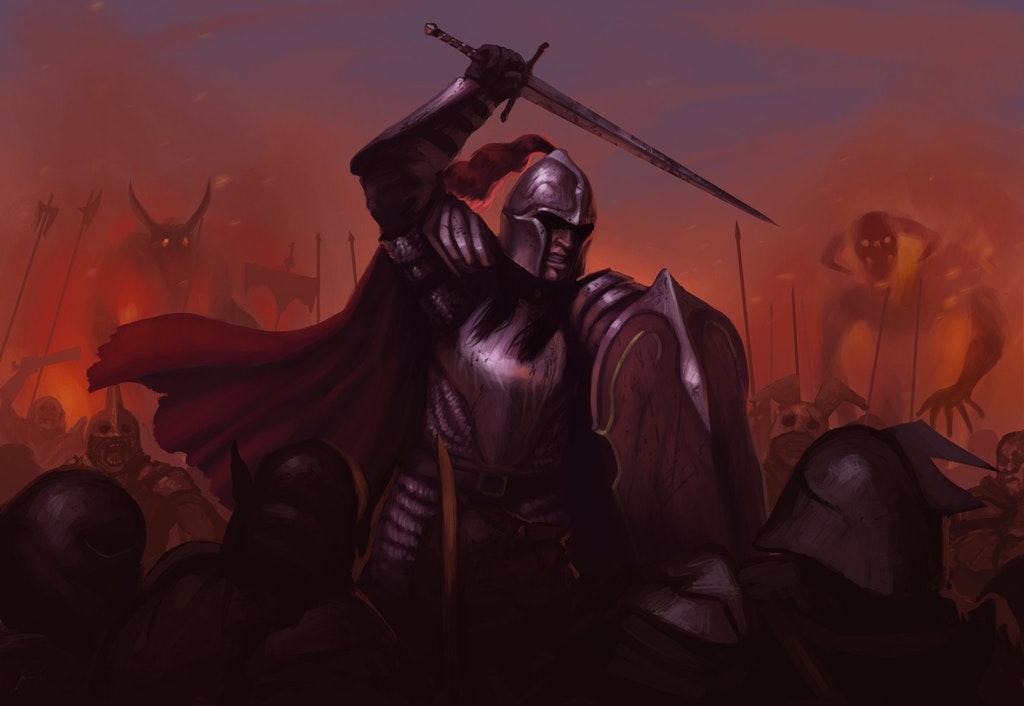

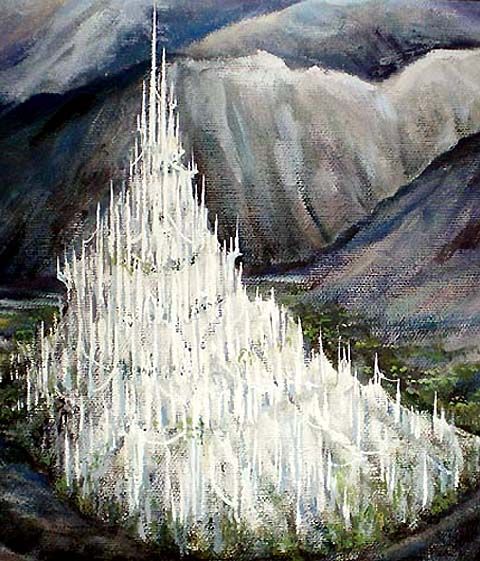


Comments